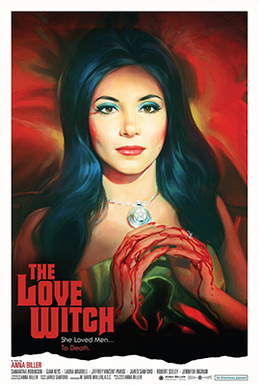
| Director(s) | Sean Byrne |
| Principal Cast | Ethan Embry as Jesse Hellman Kiara Glasco as Zooey Hellman Pruitt Taylor Vince as Ray Smilie Shiri Appleby as Astrid Hellman |
| Release Date | 2015 |
| Language(s) | English |
| Running Time | 79 minutes |
Despite being only 79 minutes, Sean Byrne’s sophomore feature feels more cohesive and put together than most horror releases out there. The story follows the Hellman family who move at the behest of their patriarch, Jesse, a struggling painter trying to help his family’s financial situation. However, their new house is filled with a few surprises of its own and Jesse finds himself possessed by his work once the movie is done. His paintings go from cute butterflies to horrific hellscapes and he becomes completely lost in his art, unable to process how long he’s been at the canvas. As he struggles to balance his work with his family he finds out that there’s also a potential killer on the loose and is forced to navigate increasingly more worrisome situations.
I love the family dynamic between the Hellman’s. It comes off as authentic and textured and you can tell exactly how each member operates in relation to the others. Both Jesse and his daughter, Zooey are charmed metal-heads while his wife (and primary source of family finances), Astrid, prefers more calming music. Watching Jesse and Zooey interact with other is heartwarming. It helps that Glasco and Embry play so well off each other. The latter comes off as a doting father, trying to find balance between his work life, duties to the family, and sense of artistic integrity. The former comes off as a playful kid, innocent to the harsh realities of the world but not stupid. When things start going wrong, the family dynamic is tested in ways that are both viscerally satisfying and thematically resonant. No dispute ever feels forced for the sake of generating conflict. It helps keep the movie feeling like a tight-knit package.
At the heart of the movie is a discussion of art, its inspirations, and the maddening way it can consume us if we let it. I love how it’s juxtaposed to highlight its destructive capacity- both in how certain forms of art can be destructive, but also in that the pursuit of artistic excellence can leave one unable to fulfill their other duties, thereby destroying a subjects state of balance. Art can be conscious, but at some level flows from a libidinal well that subsumes every other aspect of action. If we’re not careful, we can lose ourselves in it.
The camera always has a purpose and I was surprised at how effectively Byrne uses it to convey different themes. For example, there’s a move in montage scene early on where each member of the family is moving boxes around. There are no “cuts” and the camera stays stationary as people fade in and out. However, when the sequence is done, a character moves towards the “camera’s” position, and it’s actually a photo of the family. It’s a neat moment that shows the family is an series of interconnected entities that makes up one whole.
Edits and inter-cuts between related scenes are used to create these awesome visual connections between different elements that give moments much darker undertones. It helps that the movie utilizes tons of beautiful symmetric shots with saturated colors that just pop out of the screen, almost screaming at you to pay attention. The darker more disturbing images are hard to get out of your head and I have to praise the art direction for being so macabre and ghoulish. It’s unnerving and gives the movie a unique flair.
My only big problem with the movie is the very end, which feels simultaneously tacked on but poetically beautiful in a way. It kind of comes out of nowhere, but I enjoyed it in how it ties certain thematic threads up. I do think if the movie had spent maybe 10 more minutes just building up the elements to the final sequence it would have been amazing, but the way it’s done right now feels like an incomplete thought tacked to an otherwise finely-tuned movie.
REPORT CARD
| TLDR | The Devil’s Candy manages to blend family drama with intriguing scares and a narrative that’ll have you questioning what’s going on. Though the third act fumbles in some places, there’s more than enough visual flair and subtext to make up for it. |
| Rating | 9.2/10 |
| Grade | A |
Go to Page 2 for the spoiler discussion.
Go to Page 3 to view this review’s progress report .


















